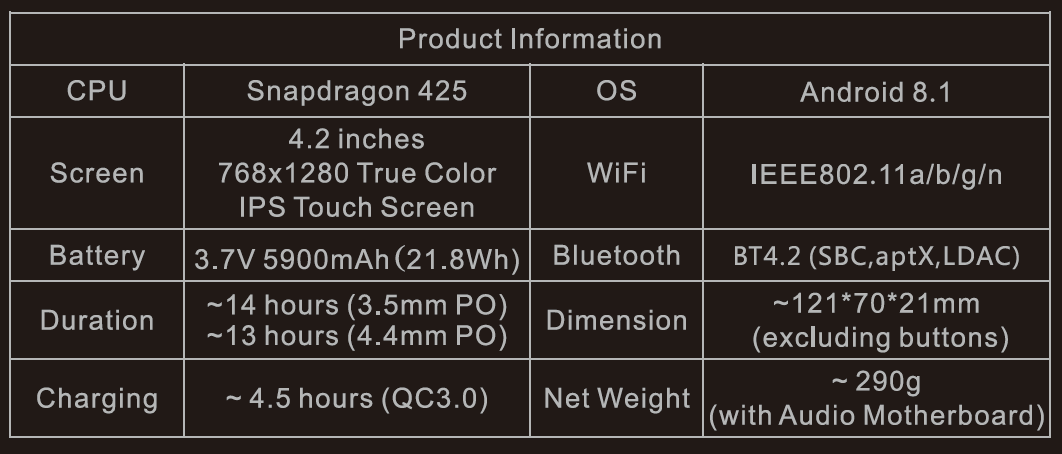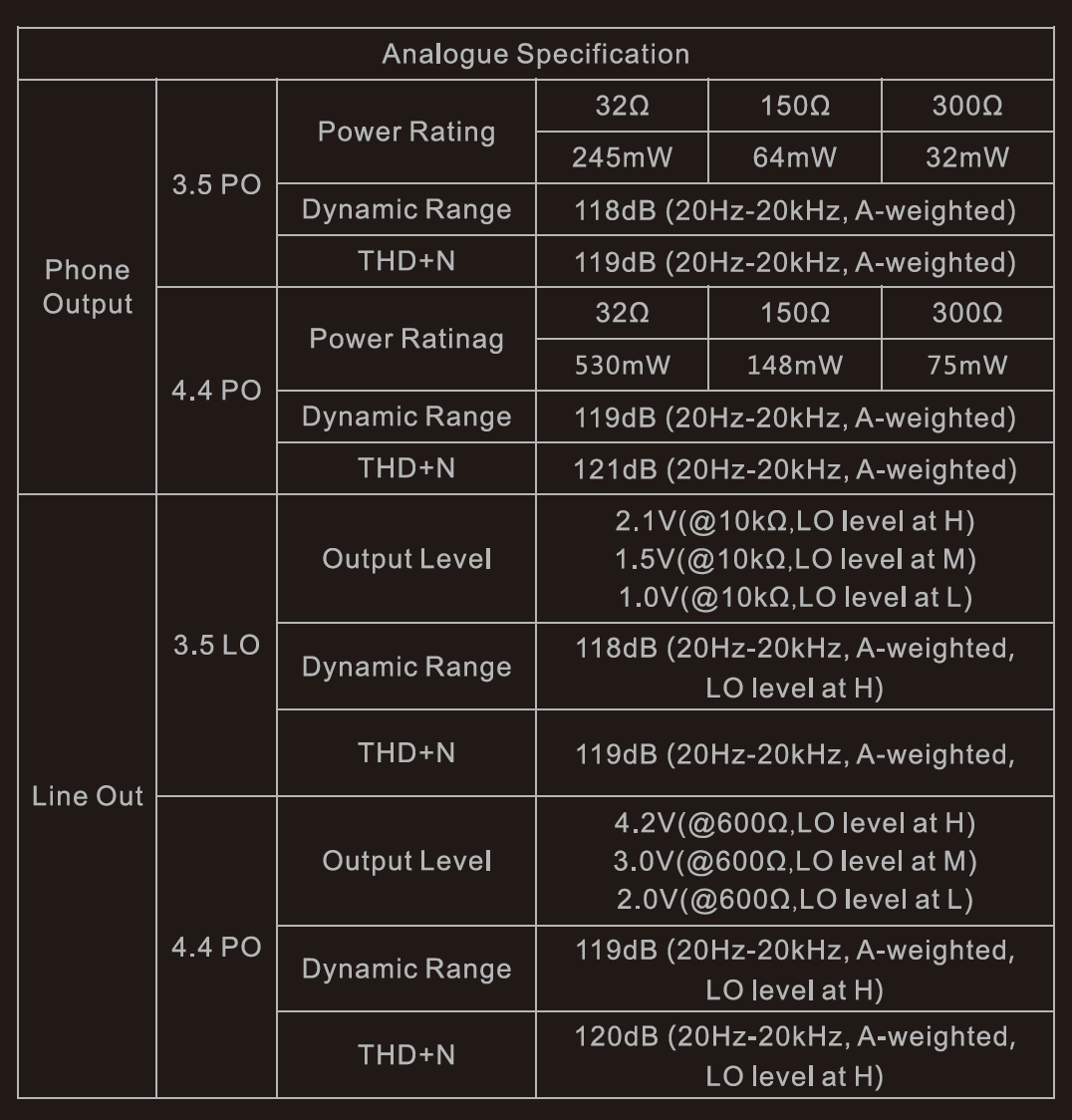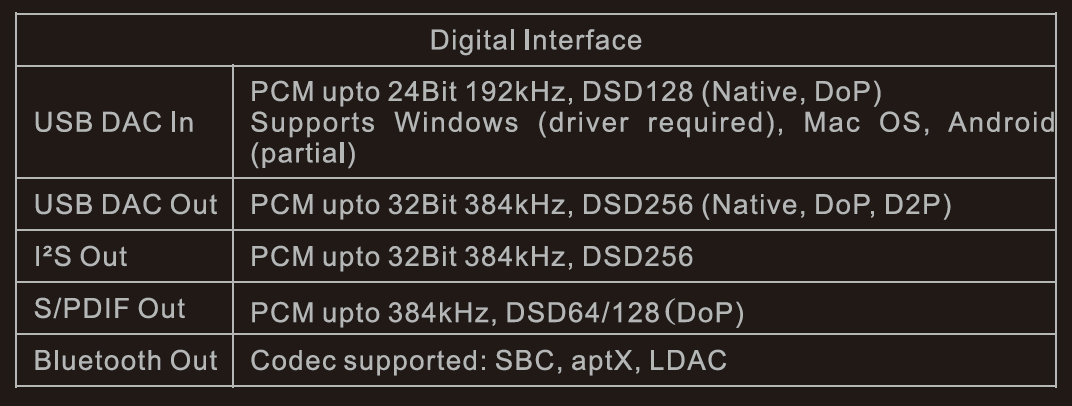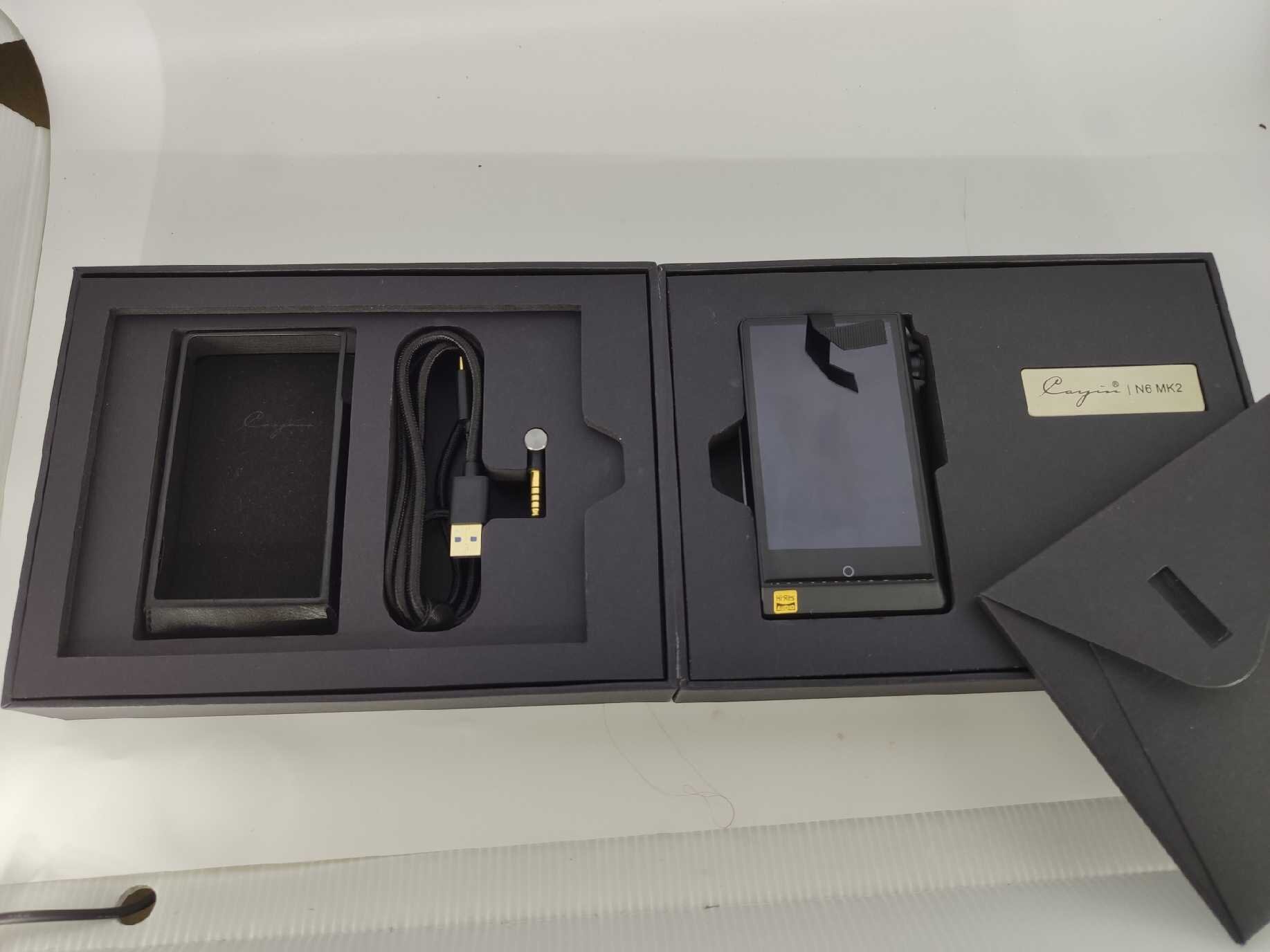CAYIN N6ii/A01 REVIEW
Analog Musicality and Transparency, Oh My!
Tuning. It is the hallmark of a given audio brand, though a brand may have several lines, each with its own specific tuning—“Analytical, Neutral, or Warm.”
An Analytical or “Bright” tuning, for instance, is one wherein the bass and midrange remain untouched, while the treble is boosted. Executed properly, this tuning will provide a clearer window on the music and thus more apparent detail. Its Mr. Hyde incarnation, unfortunately, can result in listening fatigue, theorized as the result of exposure to non-linear distortion or a harsh (irritating) treble for an extended time.
A Neutral or “Reference” tuning, on the other hand, leaves the various frequency ranges unedited and untouched (mostly). Neutral tuning is an attempt to hear/pass through the audio signal/recording as originally produced by engineers, who themselves may have utilized Neutral/Reference gear to this end. Its Mr. Hyde incarnation is actually listening to the multitude of poorly mastered recordings, which when heard via Neutral/Reference gear sounds, well, poorly mastered.
And a Warm tuning is where the bass is boosted in an attempt to make the low notes, through to the midrange, rich, intimate, and expansive. The intent here is an engaging, analog-like musicality that enchants and entices the listener. Its Mr. Hyde incarnation is a decided lack of transparency and thus lugubriousness—a dark, murky presentation bereft of detail.
When executed properly each of the above ‘tunings’ has its various benefits and its adherents. As listeners who ‘cut our teeth,’ so to speak, on tubed amplifiers and vinyl records long years ago, ours is a predilection for a Warm tuning, but one that is accompanied by sublime transparency. A rare gem this, but in our reviews it is what we seek out—“a diamond in the rough.”
This brings us to the Cayin N6ii Digital to Analog Player (DAP). Our preliminary research led us to believe that this might indeed be what we were looking for in terms of tuning. Our research is premised on not wasting the time of manufacturers, whose brands would clearly fall outside of our ‘tuned speciality,’ or our time. Suffice to say, that not a moment of our time was wasted in reviewing the superb Cayin N6ii DAP.
REFRAIN: Unlike most reviews, this review will be non-sequential, as it will start with how the equipment actually sounds and not the process of physically “undressing” it and/or laying out its various accoutrement, specifications, etc. Think of this review then, as a non-linear movie—Memento, Kill Bill, Pulp Fiction, etc—that, likewise, starts at the end and winds its way to the beginning.
The Sound
The Cayin N6ii’s/A01 ($1,119) sound is reminiscent of some of the best, classic analog—Thorens TD-125 MK II, Linn LP12, Garrard 301/401—as married to the best in today’s high-end digital offerings, especially so when accompanied by the Meze Empyrean or the Obravo EAMT-2C (reviews coming soon).
Its sound is refined, rich, analog-like, its timbre natural, and yet there is a wonderful transparency that frees detail and articulation and micro dynamics. I listen to Melody Gardot’s Your Heart Is As Black As Night (My One and Only Thrill, Verve) and she is inches away, her voice smooth, textured, breathy, as articulation of word and phrase are clearly rendered and engaging.
The Cayin N6ii’s volumetric cube—its soundstage—is broad and at times holographic, while depth, layering are very good and positioning precise, steady. I am listening, again, to Melody Gardot. This time the song is Love Me Like A River Does (Worrisome Heart, Verve) and from a black background her voice emerges intimate, passionate, crystal clear. The decay of her words, phrasing is organic and sustained. Until the saxophone takes over and then fades, its timbre natural, its decay, likewise, sustained. I play this song again. This time I am made aware of positioning, instrument separation, and the space and air between them. The Obravo EAMT-2C, like the Meze Empyrean before it, is showing off, beautifully so. The musical synergy between these ‘instruments’ is quite profound.
The Cayin N6ii for the purposes of this review was paired with the Meze Empyrean, the Obravo EAMT-2C, the Final Audio Sonorous III, and the FiiO FH5 all of which were powered effortlessly and beautifully by the Cayin N6ii. I would, however, allow 100 hours for burn-in prior to one’s optimum listening enjoyment.
Bass
The Cayin N6ii’s bass is strong, deep, detailed, and rich in a very analog-like manner. Are there more detailed DAPs across this frequency range? Perhaps. But what is it that they sacrifice (perfection being the carrot at the end of a stick, that never seems to get closer)?. Nonetheless, the Cayin N6ii’s bass response will, indeed, reach the stygian depths of the “holy-bass-head-grail,” with the proper traveling companion—Headphone, IEM—of course. In this respect the Cayin N6ii scales as though a frequency chameleon. I listen now to Stravinsky’s Sacrificial Dance—The Chosen (Stravinsky: Le sacre du printemps (The Rite of Spring), Sony Classical). At volume, a powerful foreboding swells, as deep, resonant bass is struck to depth, across a sea of tympanies, again and again.This amidst swirling woodwinds, violins, and a storm of orchestral shifts. The Cayin N6ii and Meze Empyrean and then the Obravo EAMT-2C handle all to depth and with ease.
Midrange
I listen now to Shirley Horn’s Beautiful Love (You Won’t Forget Me, Verve). The harmonica rises from a black background floats and diminishes, as Shirley’s voice enters the mix. The music is delicious, rich, nearly edible in its analog palpability. Her articulation is clear, natural, and entirely sibilance free. The overall presentation conjures the illusion of reality or, perhaps, of spinning vinyl records, itself a rich memory, which for many years is all that I did. The timbre/tonality is natural and wonderfully accurate, which fleshes out the truth of instrumental timbre and her voice.
Treble+
The Cayin N6ii’s treble is detailed, layered, vivid, and natural. Anne-Sophie Mutter now plays Mendelssohn: Violin Concerto In E Minor, Op.64, MWV O14 - 1. Allegro molto appassionato (Mendelssohn, Brahms: Violin Concertos, Deutsche Grammophon) accompanied by the Berlin Philharmonic Orchestra and conductor Karajan. The notes of her violin climb ever higher, fall, and rise again in sweet, musical crescendos, above the dynamic storm of the orchestra. There is the layering, the air, the positioning of instruments and players all beautifully spread across and at depth on the Cayin N6ii’s rendering of soundstage. And though while not the deepest experienced with a DAP it is still quite good. The timbre is rich and natural. And yes, there are certainly those DAPs with better detail and high-end extension (see: Analytical/Bright) across this frequency band, but what is it that they sacrifice in return? It is a balancing act with flavors and flavor connoisseurs, aligned across the various ‘tunings.’ The music lovers, however, will find this rendition powerfully intoxicating and may well fall in love.
Image courtesy THL
The Wrappings and Accessories
The containing box of the Cayin N6ii is a glossy silver, textured, rectangular box with its upper right-hand corner die cut in the shape of a quadrilateral, whose straight and slanted edges are poised at 4:30, approximately. The cutout exposes the Cayin trademark on the black box within. Of the outer box’s ‘eight’ sides only one is printed, while the eighth side is absent, altogether, and exposes, at its bottom, the rectangular front of the inner black box.
As the inner box is quite secure, one needs to slightly expand out the longer sides of the silver outer box, carefully slide one’s fingers beneath each of the now bowed-out sides, and slowly pull the black box away from its outer silver container.
Image courtesy MyHeadphones
The Cayin N6ii’s inner box when freed, will then open like a jewel box, its two printed, silver triangles (downward, upward facing) will separate to expose its inner contents. Inside are two die cut sections—a larger cutout on the left, a smaller cutout on the right. The left section holds a black envelope (instructions, decals, tempered glass screen covering), which when removed exposes the Cayin N6ii’s black, leather case, its charging cord (USB A to C), and a 2.5mm (female) to 4.4mm (male) right angled, short adaptor. The right side holds the Cayin N6ii and an embedded, steel label fashioned with the Cayin’s name. It is a clean, modern, affair, tastefully executed.
Cayin N6ii Design—Look and Feel
The Cayin N6ii owns a sandblasted, smooth, CNC’d, aluminum-alloy frame, that is painted matte black with a glass back. Its right and bottom edges are bevelled, its outputs (4.4mm balanced, 3.5mm single-ended, 3.5mm line out) are aligned along its top edge, its inputs (I2S, USB-C) aligned along its bottom edge. The Cayin N6ii’s left side holds a spring-loaded micro SD card slot (512GB max) and its right side touch controls for volume/on-off (rotary/push button), pause/play, forward, and backward. On its front side a 4.2” screen (768×1280 IPS) with a “Home” button at its bottom edge, that “breathes” while charging and glows steadily when fully charged. The “Home” button when tapped moves the display to the previous screen and when held returns to the “Home screen.”
The Cayin N6ii is a solid, straight-forward affair, that is well designed, industrially so, with clever design touches, though at 290 grams it is by no means one of the lightest high-end DAPs on the market. Thicker than one’s smartphone it is, however, considerably shorter, more stout, but is easily handheld or pocketed.
Functionality
The Cayin N6ii is of a modular design, wherein its included motherboard (A01) may be exchanged for one of several others—E01, T01, E02. This allows for the fine tuning of the Cayin N6ii to address, more directly, one’s listening preferences. And it is a masterful way of future-proofing the Cayin DAP and providing users with a host of
“upcoming” options.
The Cayin N6ii utilizes the Snapdragon CPU which holds 4GB of RAM and employs Android’s Oreo 8.1 as its OS. It has 64GB of internal storage and one expansion slot, that accepts “any SDXC format TF card” with the maximum size tested 512GBs. Other OTG storage options are “Flash Drive, SSD, and HDD (external power supply).”
The Cayin N6ii supports Dual Band 2.4G/5G WI-FI, which facilitates OTA firmware upgrades, the installation of applications via Google Play or APK, online streaming and downloading (Tidal, QoBuz, Deezer, Spotify, etc.), and NAS playback through the requisite 3rd party applications. The Cayin N6ii’s WI-FI connections maintained tight stability with good distance from the modem, as measured, on average, at about 7-8m. Bluetooth 4.2 with LDAC, aptX, aptX HD and AAC SBC are also enabled, which allowed the Cayin N6ii to act both as a Bluetooth receiver and transmitter. It was utilized to good effect, with near smartphone connectivity and stability.
The Cayin N6ii has a 5900mAH 3.7V battery, which translates via Cayin’s specs to 14 hours continuous playback at up to 245mWPC on the single ended output and 13 hours continuous playback at up to 530mWPC on the balanced output. As of 7pm this evening I logged eight hours on the Cayin N6ii via the single ended output and the previous evening nearly five and a half hours on the same single ended output (without charging)! That, my friends, is a “Yikes!” moment, a very good “Yikes!” moment.
And the fast charging QC3.0 feature is manna from heaven, especially when you’re reviewing equipment! Yes, fast charging will avail you from 75 to 90% charge in approximately two hours or less!
The Cayin N6ii has three analog outputs—a 4.4mm balanced/line out, a 3.5mm single ended, and a 3.5mm single ended line out. It also has two inputs—I2S: HDMI Type C (mini HDMI) output and a USB-C output which functions as DAC, a digital transport, and a S/PDIF with the coaxial embedded into the USB-C output. And as mentioned above Cayin also provides a 4.4mm to 2.5mm balanced adaptor for headphone and line out.
In terms of the Cayin N6ii’s UI, if you’ve used an android or even an Apple, then you’ll master the interaction immediately, as texts, phone calls, and any other seeming complication are inactive. And the touchscreen will facilitate all necessary actions with the exception of volume control. Though, I imagine, there are apps, that may well help one there.
As mentioned above, the Cayin N6ii is modular and its standard motherboard is the A01. The A01 motherboard utilizes the AKM AK4497EQ 32Bit DAC chipset which can natively decode PCM up to 32Bit/384kHz and DSD256 and both in bit-perfect format via Cayin’s Direct Transport Audio (DTA) architecture. The A01 motherboard also supplies the aforementioned outputs—a 4.4mm balanced/line out, a 3.5mm single ended and a 3.5mm single ended line out. The A01 can be interchanged with one of several motherboards—E01, T01, E02.
The Specifications



Conclusion
Overcoming cynicism in the audio industry, after such a long relationship is a constant fight. Reviewing incredible products that bring the music at a fraction of the cost paid for lessor or equal quality home stereo systems (once upon a time), of course, tames the cynicism, calms the fickle beast.
The Cayin N6ii/A01 ($1,199) beautifully tuned and well executed in a clean, intuitive, industrial design is one such product. The Cayin N6ii renders music in a way that unites the best of the past with the best of the now and this is no easy task. And its contradiction is wondrous, analog musicality with irrepressible transparency.
Further, the Cayin N6ii abets a broad synergy with IEMs and Headphones alike, in that it is able to tame the screech monsters, breathe fresh life into the living dead, and find symbiotic musicality with its kith and kin.
Coupled with nearly class leading battery life, quick charging capacity, bit-perfect playback via Direct Transport Audio (DTA), sufficient power for all but the monstrously inefficient, and the ability to facilitate ‘tuning’ via the exchange of motherboards—E01, T01, E02—all make the Cayin N6ii an incredibly easy recommendation and a “HIGH-NINES” award winner, our first. Needless to say, very highly recommended!
Music—Qobuz, Tidal exclusively
Alexander Tharaud—Tharaud Plays Rachmaninoff
Omar Sosa—Ballads, Calma
Patricia Barber—Verse
Rickie Lee Jones—Pop Pop
Sade—Lovers Live
Sheku Kannah Mason—Inspiration
Tracey Chapman—Where You Live
Olafur Arnalds—Island Songs
Melody Gardot—My One and Only Thrill
Melody Gardot—My Worrisome Heart
Eiji Oue—Rachmaninoff: Symphonic Dances
Hilary Hahn—Tchaikovsky
Mechell Ndegeocello—Bitter
Maxwell—Maxwell’s Urban Hang Suite
Sarah Jarosh—Undercurrent
Igor Stravinsky—Stravinsky: Le sacre du printemps (The Rite of Spring)
Annie-Sophie Mutter—Mendelssohn, Brahms: Violin Concertos
London Grammar—If You Wait
Stevie Wonder—Innervisions
Marvin Gaye—What’s Going On
Miles Davis—Kind of Blue
Jóhann Jóhannsson—Orphée
Dave Holland—Emerald Tears
Gidon Kremer, Daniil Trifonov, Giedre Dirvanauskaite—Preghiera/Rachmaninov Piano Trios
Ancillary Equipment
Meze Empyrean
OBravo EAMT-2C IEMs
Final Sonorous III
FiiO FH5
AudioQuest Cobalt
AudioQuest Red
AudioQuest Black
AudioQuest Dragon Tail
Samsung S10
Apple X iPhone
The Company
Cayin
Zhuhai Spark Electronic Equipment Co., LTD
(Head Office): 9 Lianfa Road, Liangang Industrial Park, Shuanglin Zone,Zhuhai, Guangdong, China 519015
Website:www.cayin.cn
E-mail:info@cayin.cn(Technical Support)







